Ever wondered why at certain times of the month your skin may break out? Or in times of stress your skin seems to loose it’s glow? This is no coincidence; your skin will always communicate what is going on in your body. Looking at the skin can give important indicators including any dietary allergens, the presence of toxicity, and hormonal imbalances. If you take the time to read and understand the signs, you will be able to come up with solutions that not only improve your overall health, but also restore your skin back to its natural glow.
Decoding your skin is actually very simple if you know what to look for. I spent several years working as a Beauty Therapist and along the way I discovered that health knowledge combined with face mapping is a very accurate way to understand what is going on with your body. Before we get into the ancient practice of face mapping let’s take a look at some popular skin conditions and what may be the cause of them:
Eczema or dermatitis:
This is one of the most common skin conditions which are often caused by food allergens. Eczema or dermatitis usually shows up mainly on the face, arms, legs and hands as:- Patches of dry skin that have a light to severe rash,
- Dry and flaking skin,
- A persistent itch which is triggered by foods,
- Gluten, especially wheat,
- Casein found in cow’s milk,
- Non-fermented soy products such as tofu and meat analogues.
Acne:
An overload of bacterial or fungal growth within the digestive tract is the most common cause of acne. As a result, this overload then becomes harder to break down, thus causing an increase in toxins within the body. Fungal infections can be very resilient and often hard to treat. Limiting processed foods and increasing wholefoods along with taking an antifungal treatment is the best way to heal the infection.
However it is crucial that an infection is correctly diagnoses from a dermatologist, as unnecessary treatment with an anti-fungal can make the condition worse. For all acne problems Zinc and essential fats are important for healing the inflammation, so make sure you are not deficient in these. Overall try and remove the toxicity build up by eating a diet rich in wholefoods and nutrients, avoid chemicals in body products, drink plenty of water and exercise regularly.
Things that can trigger or aggravate acne:
- Hormones: Hormonal changes in teenagers, pregnancy and oral contraceptives can increase the sebum production.
- Certain medications: Medication that contains corticosteroids, androgens or lithium.
-
Diet: Dairy products and carbohydrate-rich foods are known to increase blood sugar and possibly trigger acne.
Rosacea:
Rosacea shows up as redness on the nose and cheeks, and can often be mistaken for acne or eczema. Rosacea is a sign that there may be an inflammation within the upper digestive tract. The Helicobacter pylori bacterial infection is the most common cause, and if left untreated can cause reflux and stomach ulcers. Other contributing factors are bowel toxicity, low-fibre diet, high sugar, high fat intake, long term antibiotic therapy and food sensitivities. There are certain things that can aggravate rosacea by increasing blood flow to the surface of the skin. Below are some of these triggers:- Hot foods and drinks
- Caffeine
- Spicy foods
- Dairy products
- Extremes of temperature (sunlight, humidity, wind)
- Stress
- Alcohol
Treatment: The best way to cure rosacea is lifestyle changes combined with medication. Overall seek medical advice and avoid the triggers and implement a less toxic lifestyle.
Face Mapping
Our body is very wise and loving; we just have to learn to trust it. This is where the ancient practice of face mapping comes in. Face mapping is the art of unlocking the mysteries of your skin to help you treat pimples, adult acne, blemishes and other skin irritations. Face mapping is a traditional Chinese medicine, and is used by many holistic skincare experts.
Your life events are often written and mapped on your face; therefore it is a great resource to use in analysing your health and wellbeing and to pick up any imbalances within your body. Nine times out of ten there is a solution behind your skin disorders. For example sudden breakouts around the mouth are typically caused by a hormonal imbalance – this is referred to as hormonal acne.
So, what are your breakouts, spots and dark circles trying to tell you? Here's a quick guide: 
The Zones |
The Reasons Behind |
| Zone 1 & 3: | Bladder & Digestive System — Improve your diet by eating more wholefoods and hydrate with at least two litres of water a day. |
| Zone 2: | Liver — Slow down glamorous socialite. Try cutting back on alcohol, heavy foods or dairy. This area can also indicate a food allergy. |
| Zone 4 & 10: | Kidneys — Keep yourself hydrated with water and kick the caffeine and soda. |
| Zone 5 & 9: | Respiratory system — This area is known to break out in acne with people who smoke or have allergies. |
| Zone 6 & 8 | Kidneys — Dark circles are usually a result of dehydration. Drink more water and less caffeine! |
| Zone 7: | Heart — Take some time to chill out and find your bliss. Make sure you keep a check on your blood pressure. |
| Zone 12: | Stomach — It is time to clean up and renew - consider a detox to remove the toxins. You may also want to consider adding more fibre to your diet to help with digestion. |
| Zone 11 & 13: | Hormones — Stress and hormonal changes can sometimes be alleviated with more water, more sleep, some meditation and a few extra servings of dark, leafy greens. If breakouts in this area are persistent, make an appointment with your doctor to look into a possible hormonal imbalance. Additionally, breakouts in this area can also indicate when you are ovulating. |
| Zone 14: | Illness — Can be a sign of your body fighting bacteria to avoid illness. Take some time out and drink plenty of fluids. |
Make an effort to study your face zones every couple of days, and within a few weeks you should see an improvement in your skin and overall health.


